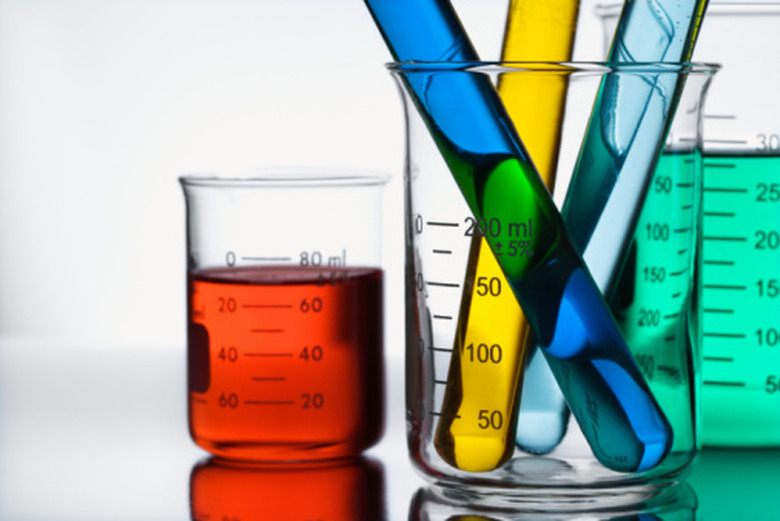Easy And Fun Chemical Reaction Experiments
When you think of chemistry, you perhaps first imagine balancing chemical reactions or solving problems, and maybe doing some lab experiments with powders including names you've never heard of.
But potentially cool chemical reactions for school demonstrations or just your own amusement and learning are happening all around you, and many chemical reaction experiments are easily and safely performed using easily obtained reagents, or reactants.
A reaction involves changes to molecules or atoms, and to show immediate and decisive chemical change, experiments with various solids, liquids and gases can illustrate the basics of this discipline nicely. Whether you are looking for college chemistry experiments or something more basic, read ahead for ideas.
Types of Chemical Reactions
Types of Chemical Reactions
The five basic types of chemical reactions, in brief, are:
- Combustion, where oxygen gas and a fuel combine to liberate lots of heat and a variety of different products, often elemental carbon;
- Composition, where multiple substances join to form one;
- Decomposition, which creates multiple substances from a single reactant;
- Single displacement, in which one element "kicks off" another from a molecule to form a new compound and a new element;
- Double displacement, in which two compounds swap anions and cations to generate two new compounds.
Examples of Chemical Reaction Experiments
Examples of Chemical Reaction Experiments
Vinegar and baking soda: When you mix ordinary baking soda with white vinegar (a dilute solution of acetic acid), the acid reacts with the base, donating a proton that quickly displaces the sodium from sodium bicarbonate to create carbonic acid. This acid then decomposes into water and carbon dioxide gas, the bubbles you see rapidly forming in the mixture as a result.
This series of reactions is represented by the following chemical equations:
NaHCO3 + CH3COOH → Na+ + CH3COO_ + H2CO3
H2CO3 → H2O + CO2
Slowing the browning of fruit: You have probably noticed that when you slice an apple in two and leave it out, the exposed surface of the apple usually turns brown in a matter of hours. This is because the oxygen molecules in air easily interact with the sugars in the apple, with the resulting oxidation products showing a telltale brown. (The rusting of iron occurs by a similar but far slower oxidation process.)
If you place a sliced apple in water, the water will delay the oxidation by shielding the apple from some of the oxygen molecules, but eventually oxygen finds its way to the apple and begins its dirty work. Placing lemon juice (ascorbic acid, best known as vitamin C) in the water slows the oxidation further by serving as a decoy: The oxygen would "rather" oxidize the acid than the apple. (This is a simple example of a food preservative.)
Pasta rocket: In the presence of the enzyme catalyst yeast, household hydrogen peroxide undergoes a far more rapid decomposition than it otherwise would to liberate oxygen gas:
H2O2 → H2 + O2
The yeast is not included in the reaction because it is not itself changed; it is a manipulator of in-process events, speeding them up as much as millions of times over.
- See the Resources for a video on how this oxygen can be put to striking use in making a kitchen "rocket."
Lava lamp light: You can create your own version of the classic lava lamp by mixing cooking oil and plain water in a large jar. The oil is less dense than the water, and floats to the top in a single layer. When you add food coloring, this water-based solution also sinks to the bottom.
If you then drop an Alka-Seltzer or its generic equivalent into the jar, the acid and the base kept segregated in the solid tablet can react, releasing carbon dioxide gas.
As the energy of the gas molecules propels them toward the surface, they pull along some of the colored water molecules. When the carbon dioxide bubbles to the top of the oil-air interface and is released, the colored droplets slowly descend through the oil layer back toward the bottom of the jar.
Cite This Article
MLA
Beck, Kevin. "Easy And Fun Chemical Reaction Experiments" sciencing.com, https://www.sciencing.com/easy-fun-chemical-reaction-experiments-8500826/. 9 March 2020.
APA
Beck, Kevin. (2020, March 9). Easy And Fun Chemical Reaction Experiments. sciencing.com. Retrieved from https://www.sciencing.com/easy-fun-chemical-reaction-experiments-8500826/
Chicago
Beck, Kevin. Easy And Fun Chemical Reaction Experiments last modified August 30, 2022. https://www.sciencing.com/easy-fun-chemical-reaction-experiments-8500826/
